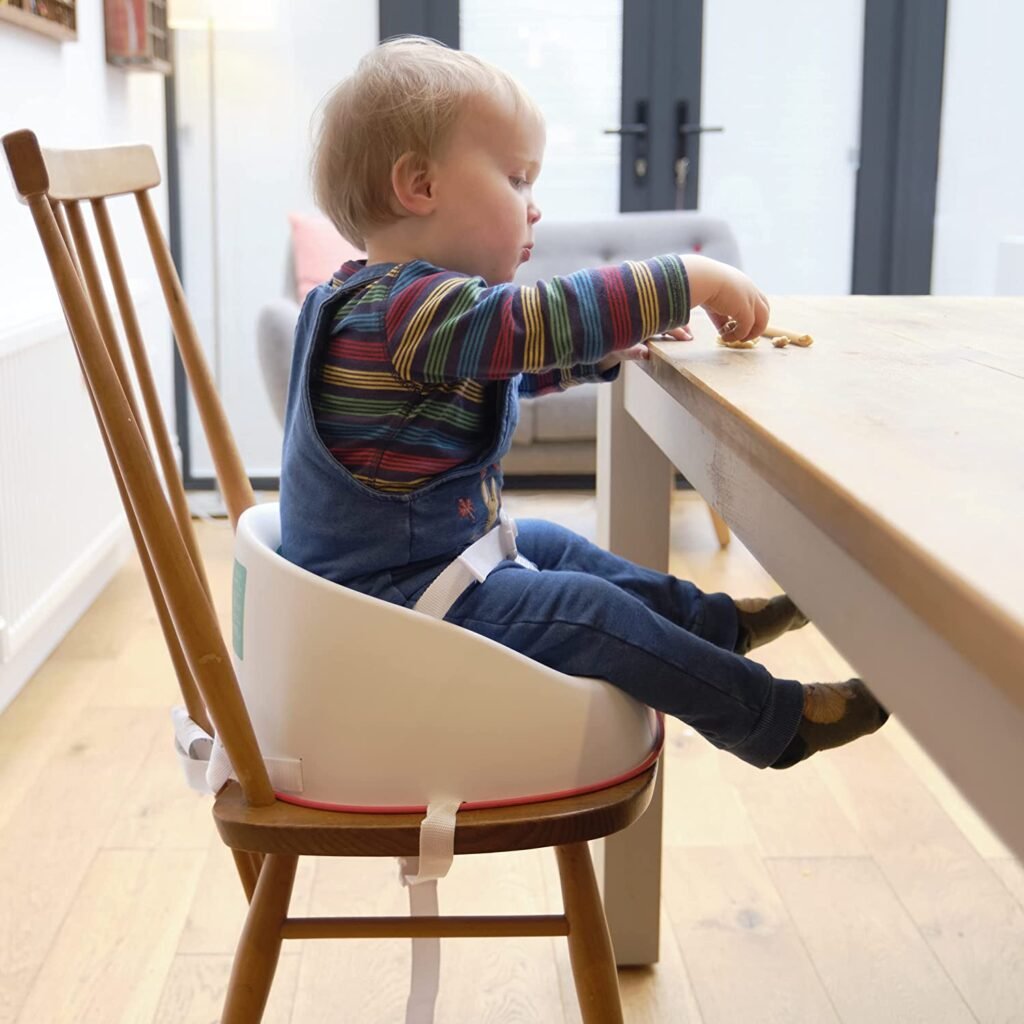
A high chair raises a child to a convenient sitting height for easy feeding by the parent. The Graco makes a good example. Often babies begin using high chairs at around six months.
But there comes a time when the child needs to graduate from the high chair. So, how do you know that the child is too old for the high chair?
 How Do You Know the Child is Too Old for the High Chair?
How Do You Know the Child is Too Old for the High Chair?
The physical and mental development of children differ. Therefore there isn’t one set age when the kid outgrows the high chair.
Instead, every parent must stay alert for the tell-tale signs that the child is too old for the high chair. Some children outgrow the feeding chair at 18 months. Yet others use it till they are three years. Therefore to know the appropriate time to make that transition, look out for the following signs.
Signs a Child is too Old for a High Chair
Attempting to Climb Out and Unfasten the Straps
As your child grows, the desire to explore the environment intensifies. Thus you can see behaviors such as playing with food, plates and the desire to change seating position.
Therefore during a certain period, the child will make attempts to climb out of the high chair. But unfortunately, the design of the high chair doesn’t allow that freedom.
When the child displays signs of wanting to change sitting positions and attempt to climb out of the feeding chair often, understand that a transition is evident. In addition, the kid may attempt to unfasten the straps to gain freedom of exploration.
Still, other fast-growing children may amaze you by successfully escaping from the high chair. If the child can unfasten the straps and climb down from the chair, it means he has outgrown the chair.
At that point, you need to graduate from the high chair to another seat that supports her state of development.
The Chair Agitates the Child
Once the desire to explore becomes unbearable, the child will try by all means to secure her freedom. If she can’t remove the belts and straps, she becomes frustrated and hysterical.
What adds to the agitation is that the child can spot the difference in her seat from other family members. When that happens every time you position her at the high chair, she becomes restless. Moving her from that feeding chair to what other children use often calms her down.
The Kid has Learned Basic Table Etiquette
 In the beginning, children often lack basic table manners. Often, you’ll find such a child standing on chairs, throwing food here and there, and playing with plates.
In the beginning, children often lack basic table manners. Often, you’ll find such a child standing on chairs, throwing food here and there, and playing with plates.
During feeding time, teach the basic table manners. And once the kid learns to sit calmly on the table, doesn’t scatter plates and food during mealtime, move her out of the high chair.
However, the kid may still require your input and fully grasp the entire table manners. The crucial factor is that the child shows a willingness to follow the instructions you are telling her.
Imitating Other Adults
Also, beware when a child strives to imitate you. For instance, the kid may desire to sit on the same chair you often sit on during mealtime. When that occurs, it means it’s time to move on to a booster seat or adult seat.
Age and Physical Development
Besides the previously mentioned signs, age and physical development of the child comes into the picture too. An increase in body size may make the child not fit comfortably in the high chair. In such instances, the position of the food tray may ill-fit her. When that happens, switch to other types of chairs.
How to Transition From High Chair
Having learned that your child is ready to graduate from the high chair, you must help her get over it smoothly.
Here are a few tips on how you can assist the child move out of the high chair:
Take it Slow
Don’t make it sudden but instead, let the change be gradual. Don’t wait for the main meals. Begin by sitting the toddler on an adult seat while enjoying some snacks. That way you help him get used to it. After getting used to the new chair, then introduce the chair at main meals time.
Consider Using a Booster Seat
You aim to help the child reach the table from the ordinary adult seat and remain composed. One way of accomplishing that is using a booster seat such as the Prince Lionheart.
Further, the booster seat has straps that secure the child in the new chair and therefore enhancing security. Remember to take into account the child’s favorite color when buying a booster seat.
Child Seat and a Matching Table Size Can Help
Another option is to introduce chairs and tables that fit all your children. That’s viable if you have other older kids in the family.
That way you can arrange all the children around the table and hence making it a social gathering. You can also consider removing the tray from the high chair and blend with the adults’ table. Still, you can turn off other distractions like televisions and let the kids enjoy their meal.
Conclusion
As your child grows, take note and know when she is ready to move out of the high chair. The age for making that transition differs from child to child.
If the child is mentally or physically handicap, you need to exercise patience. And once the kid shows signs that she is too old for a high chair, guide her in the transitioning period.






